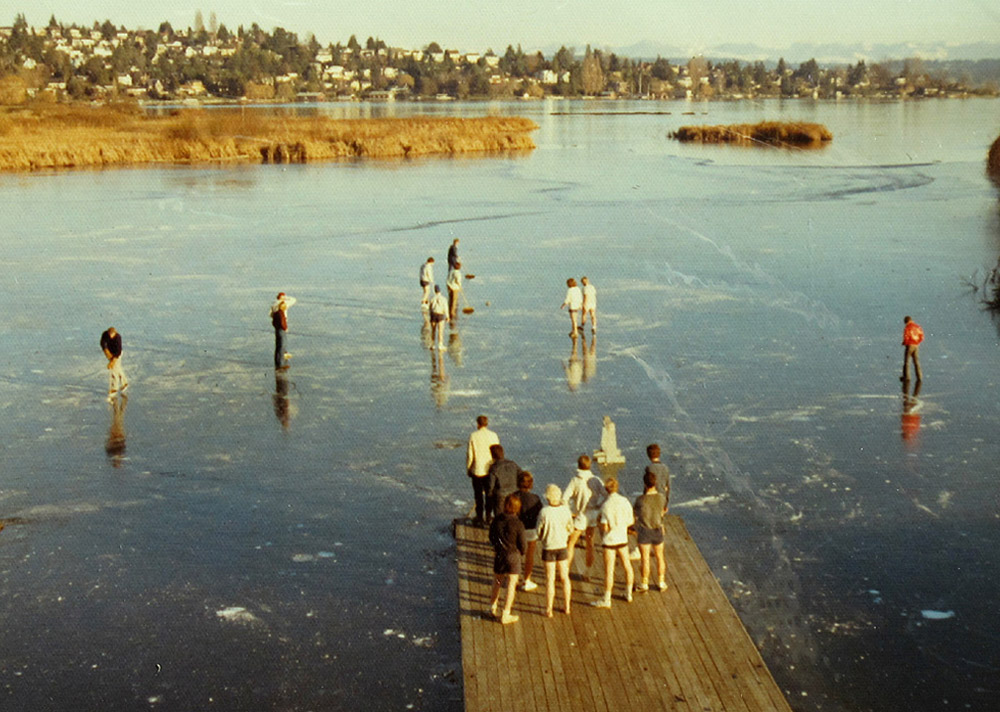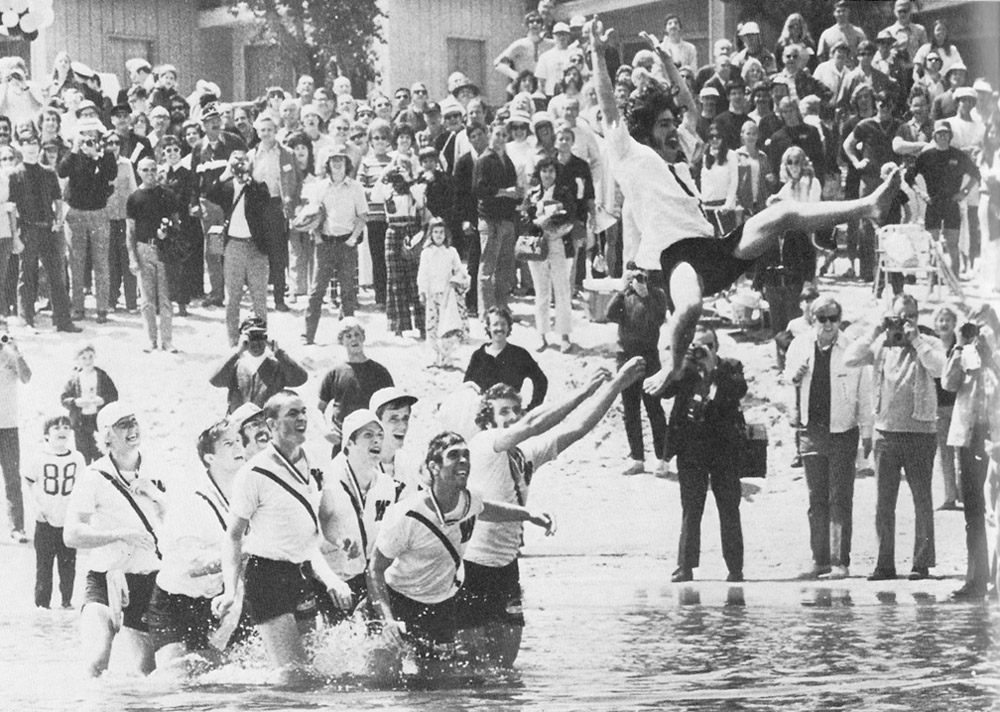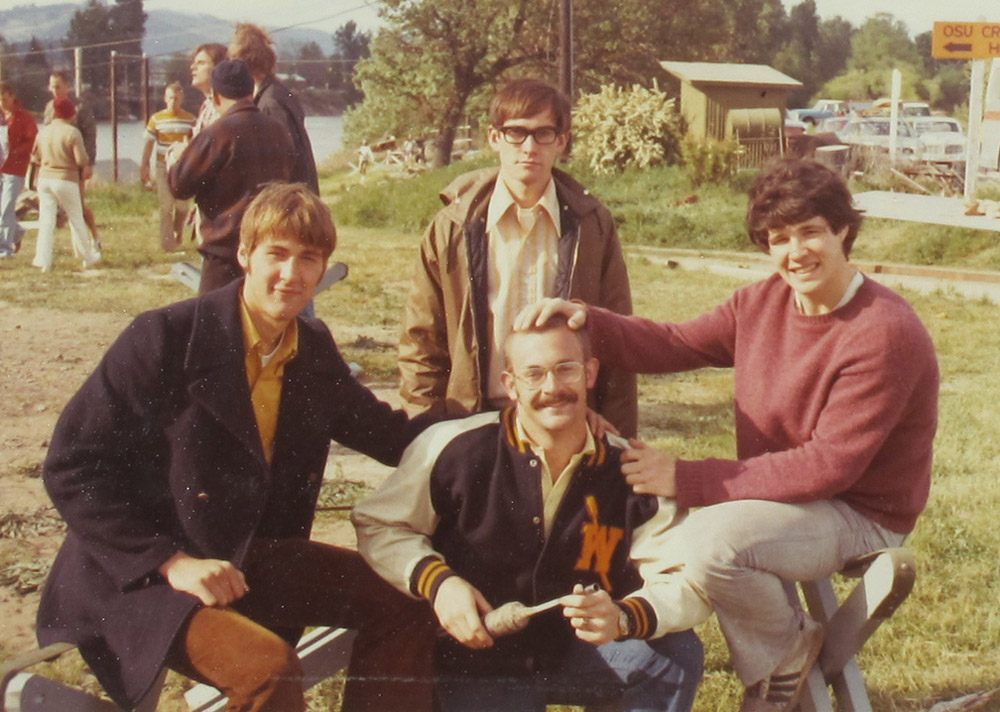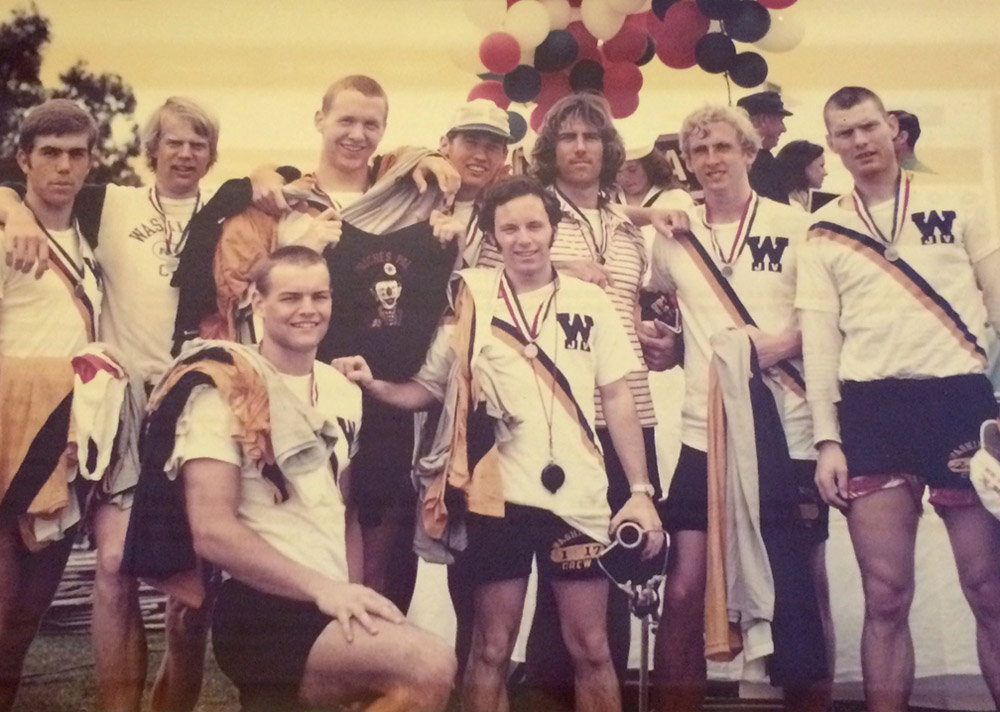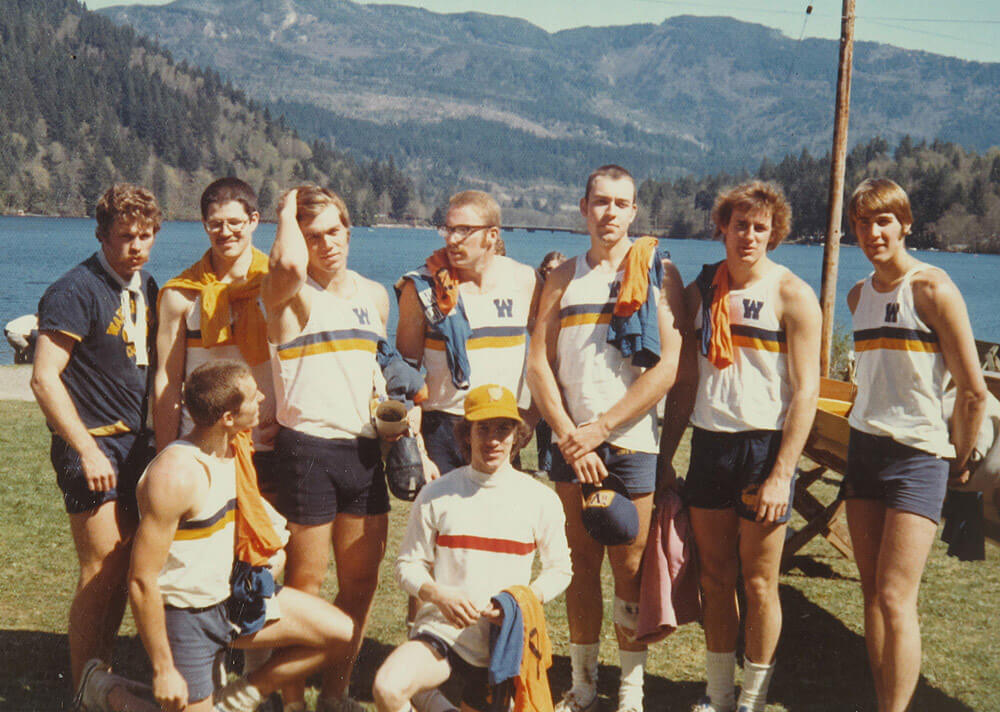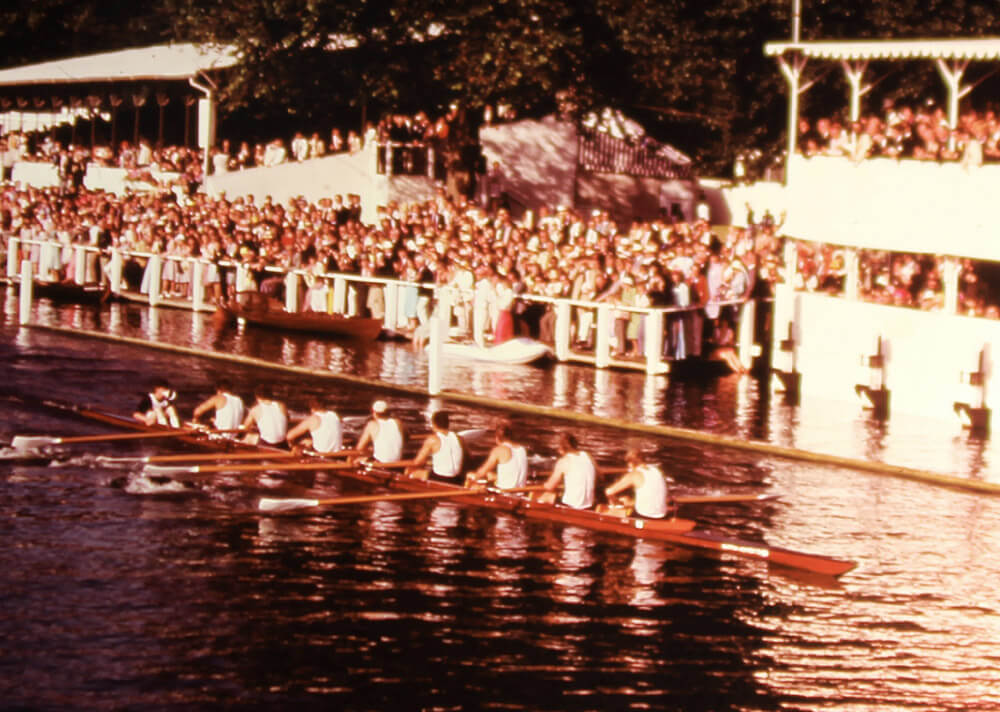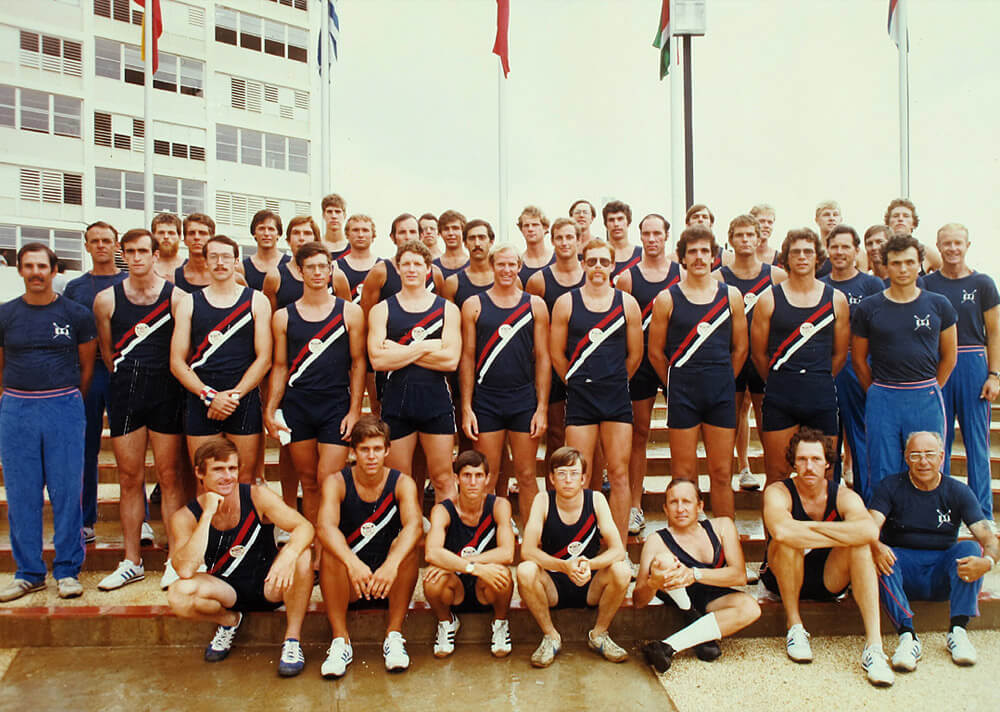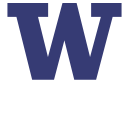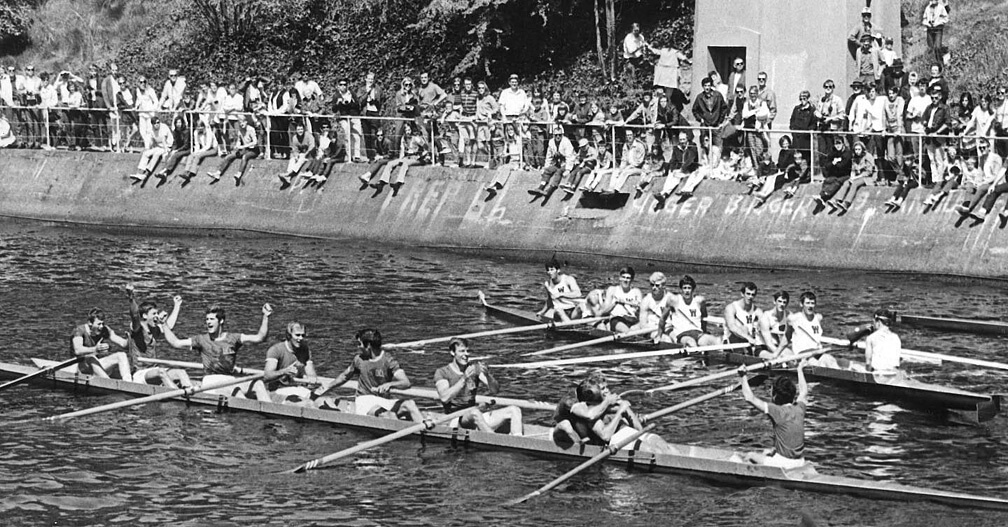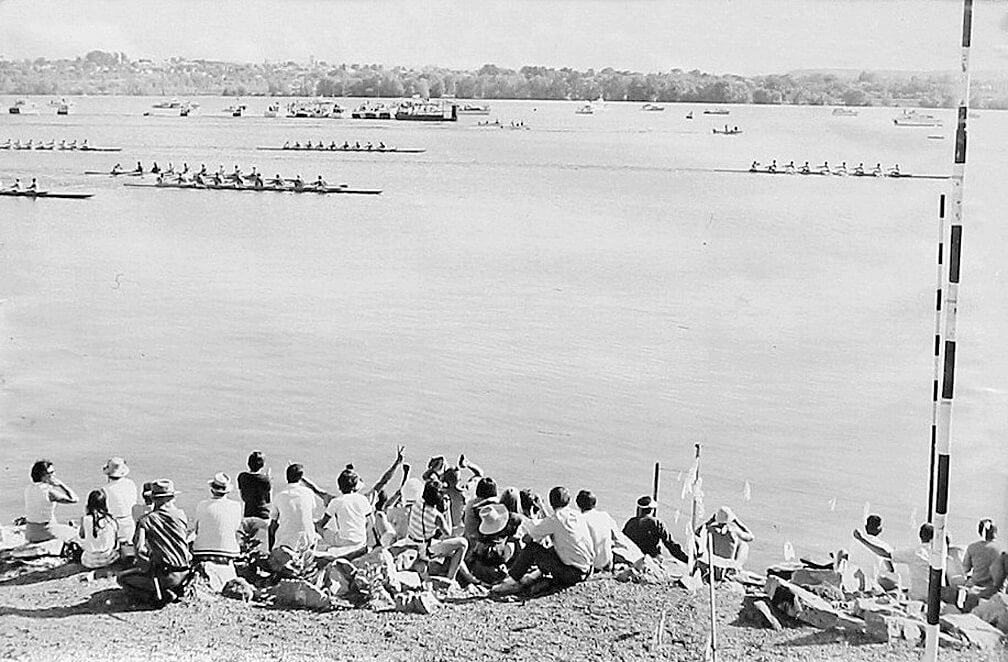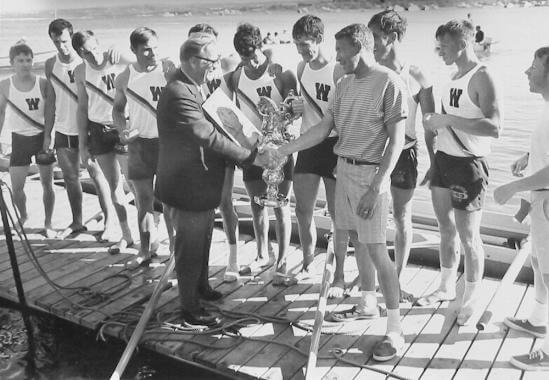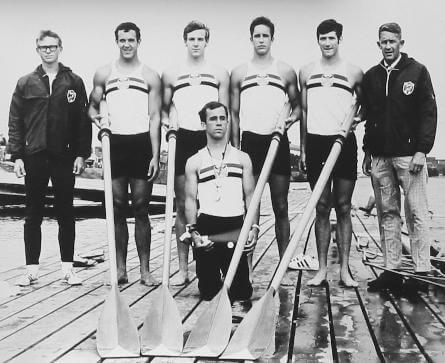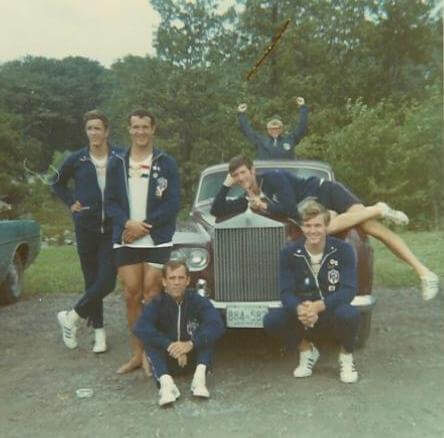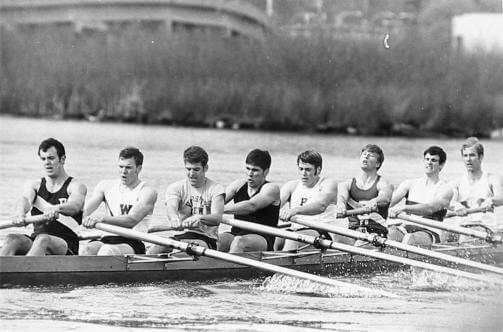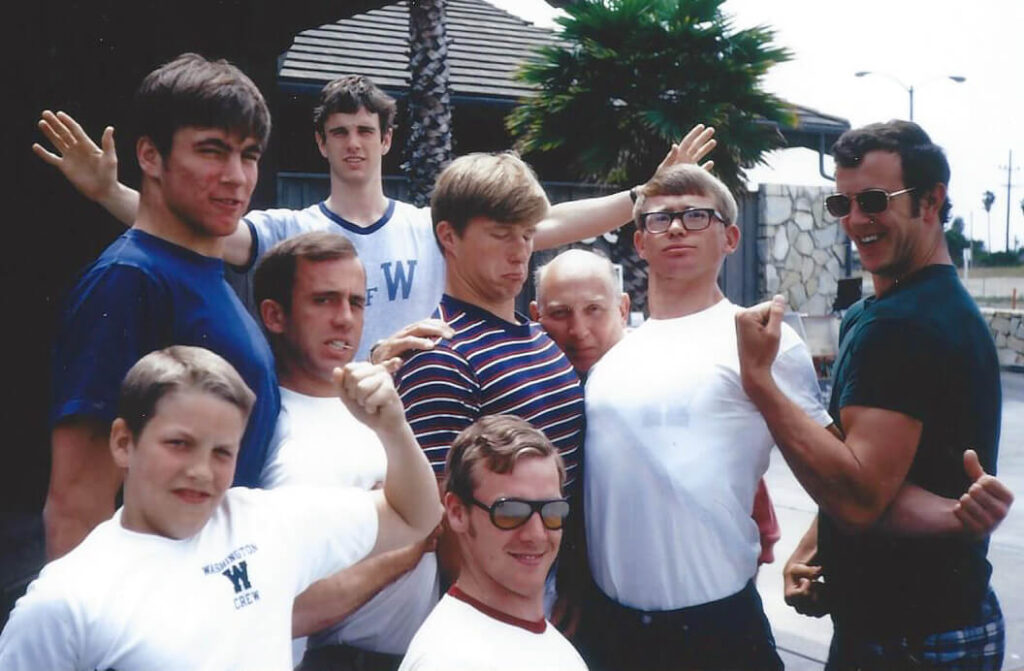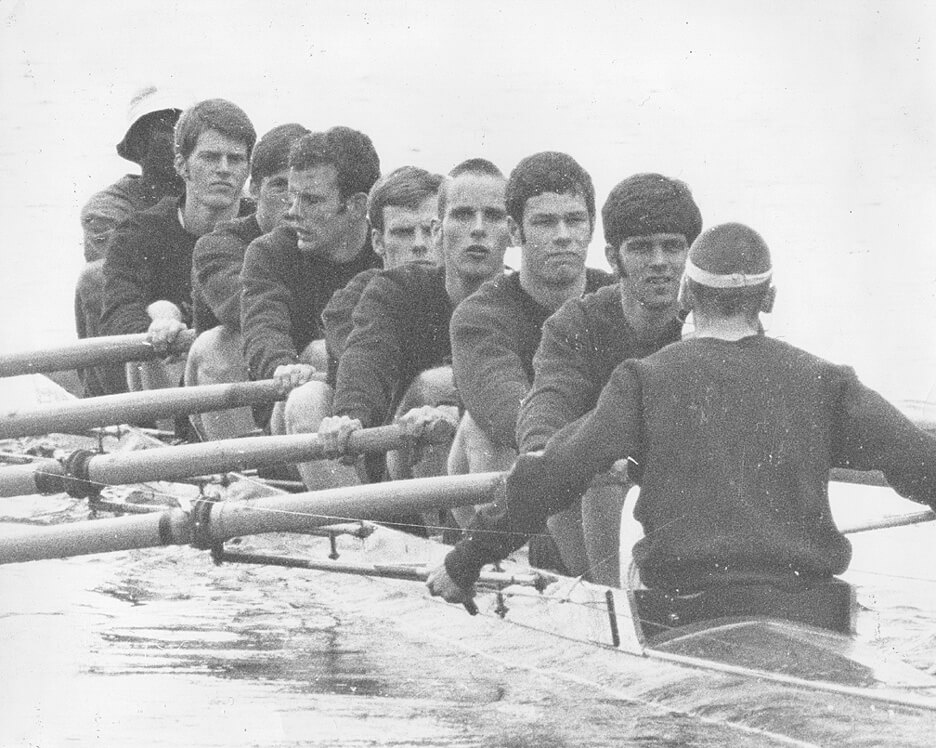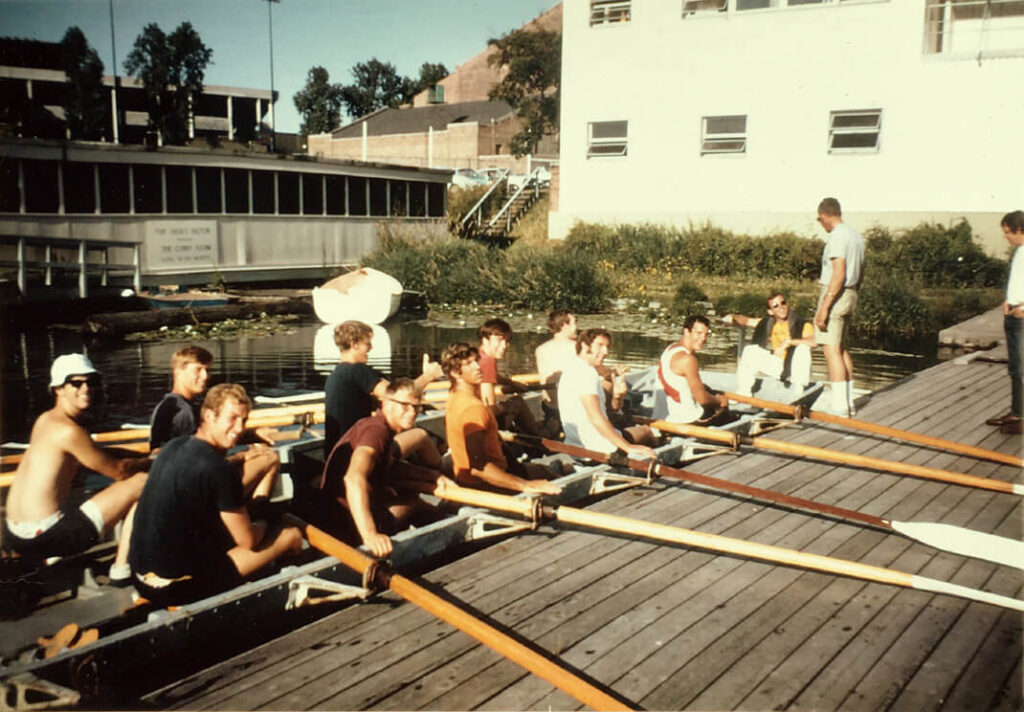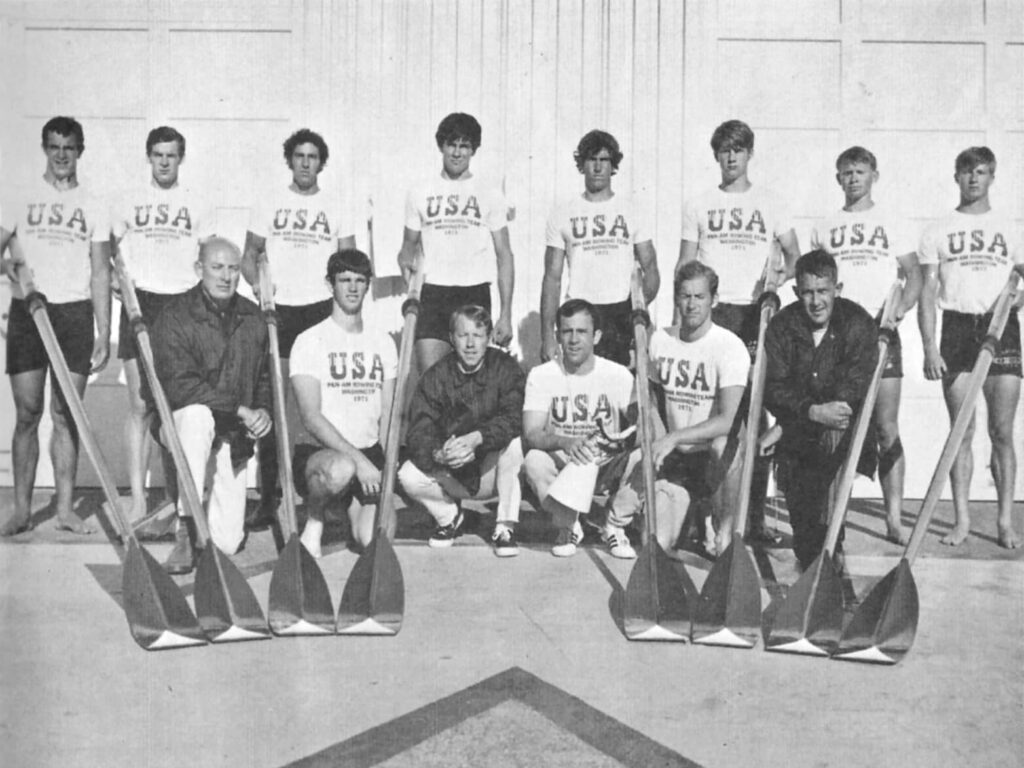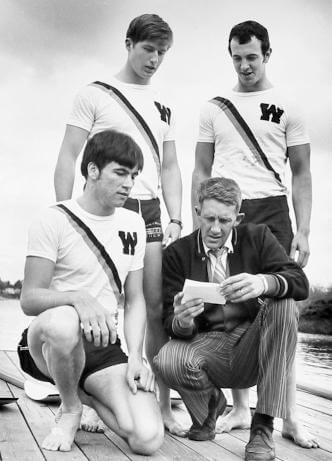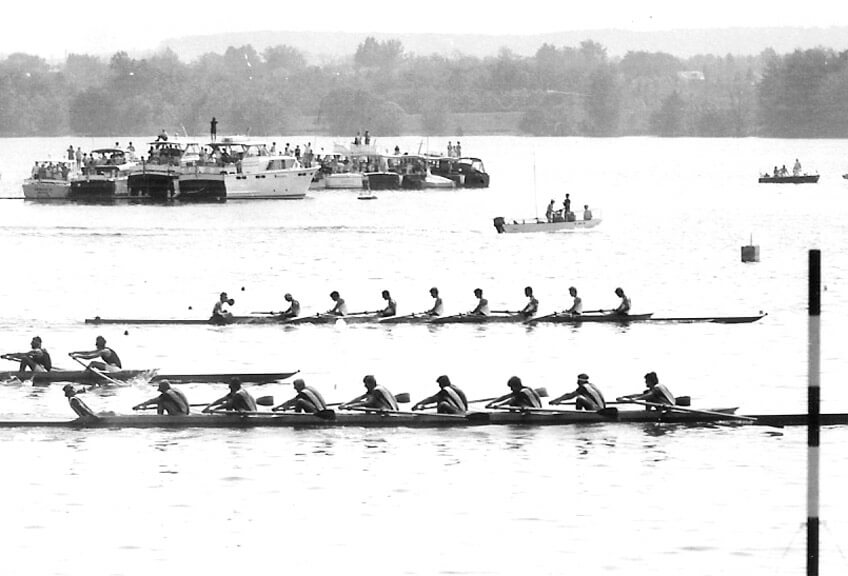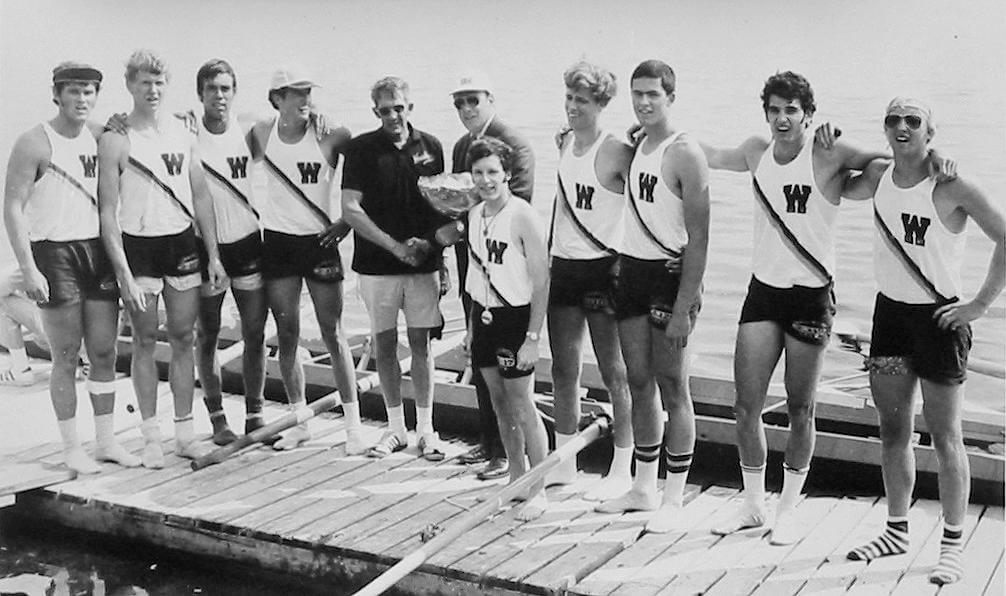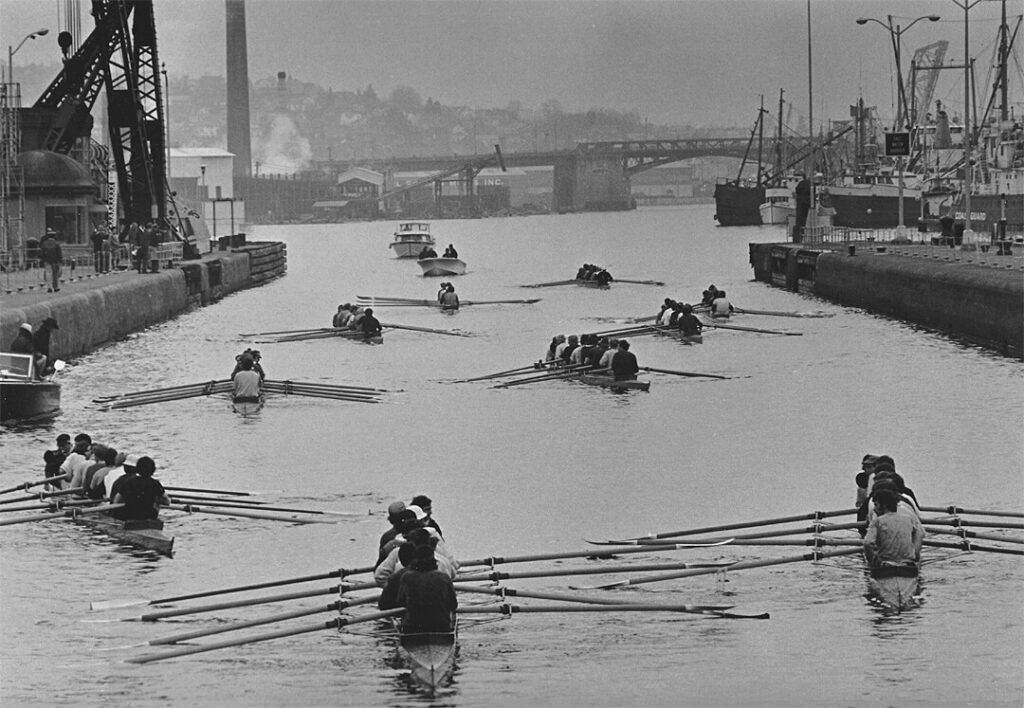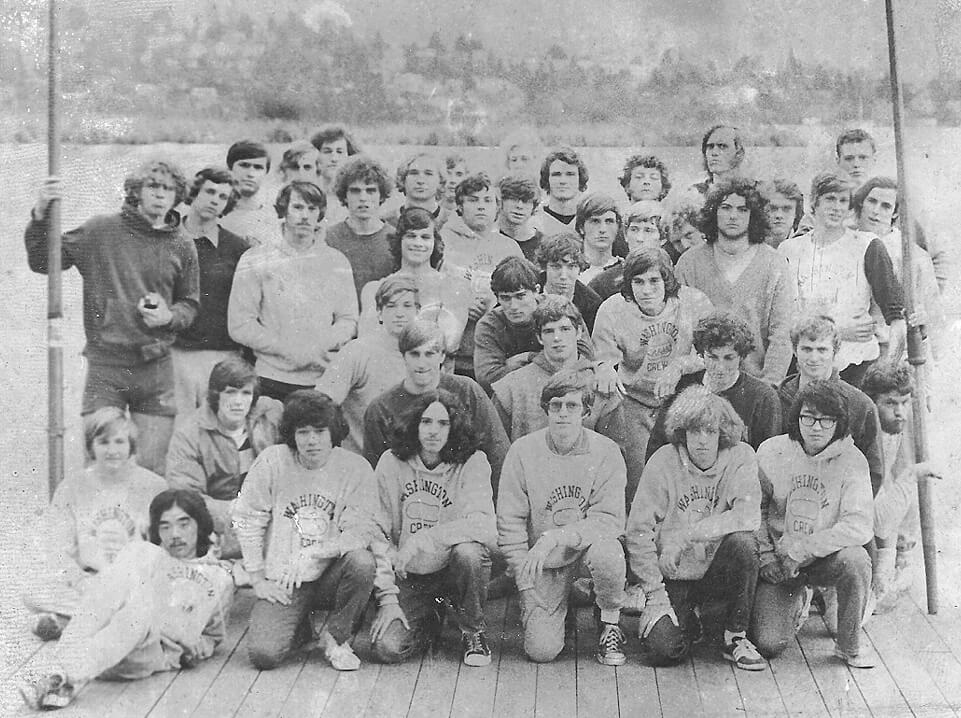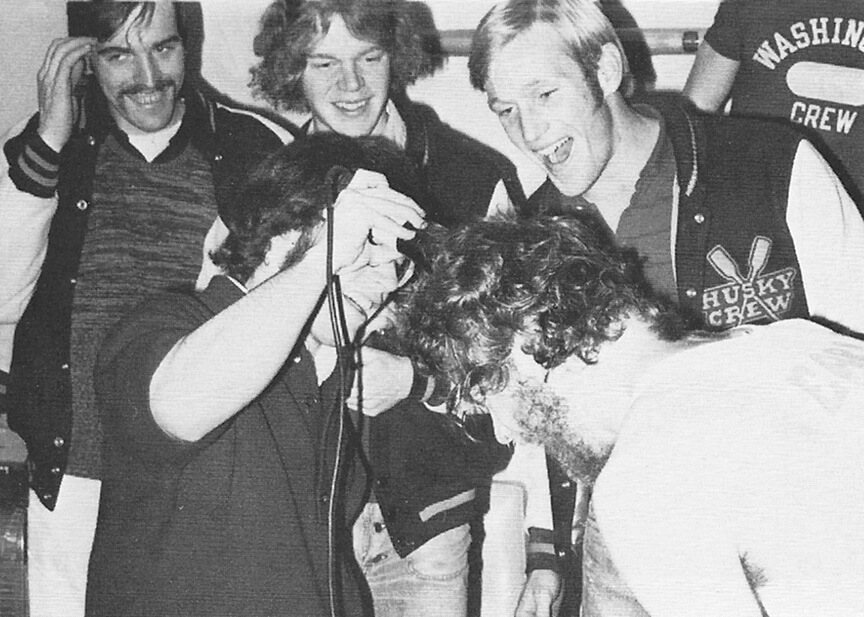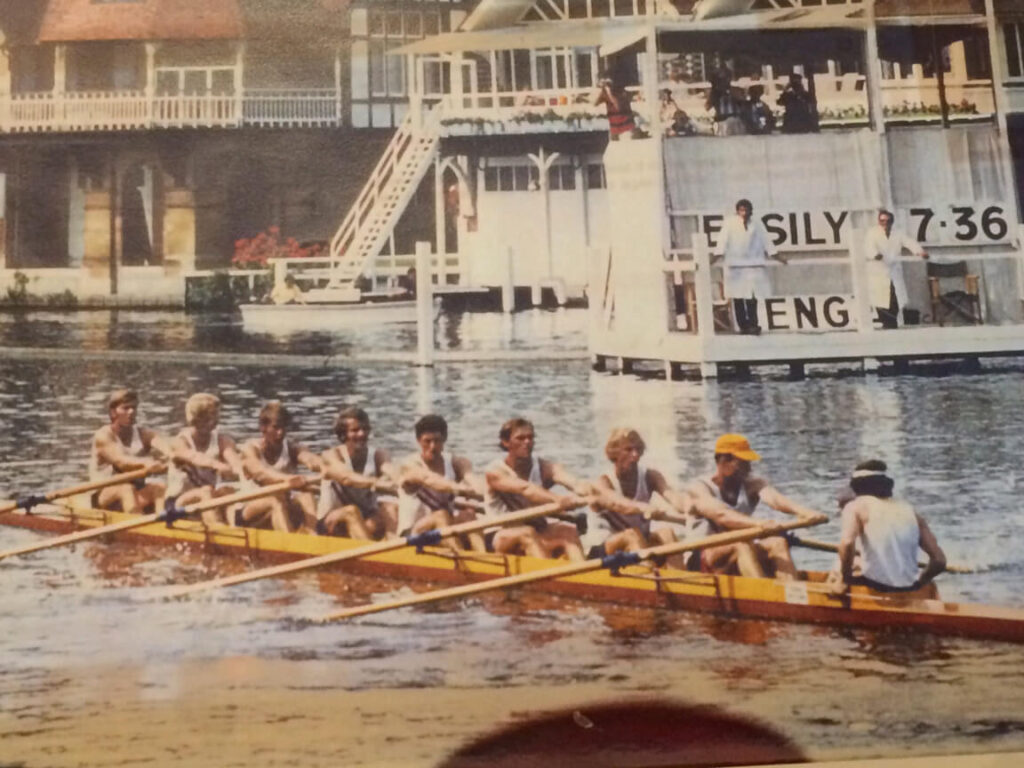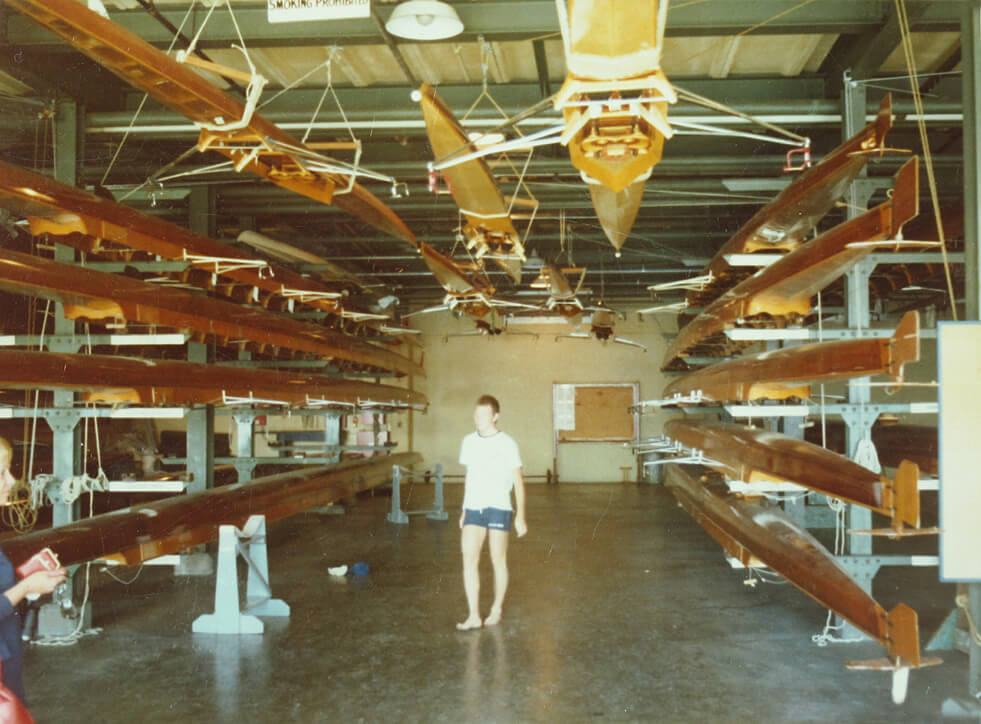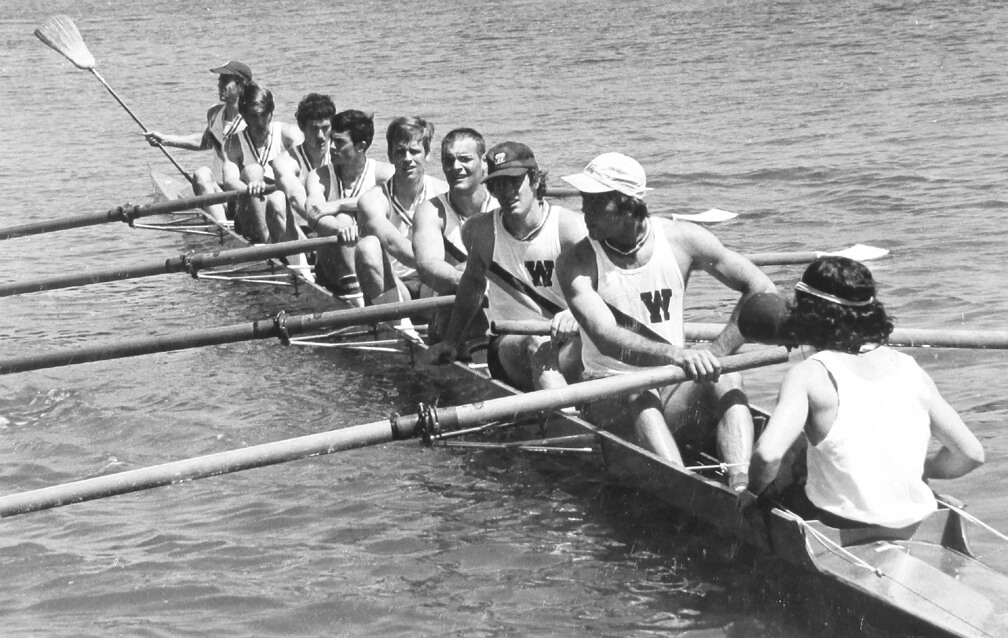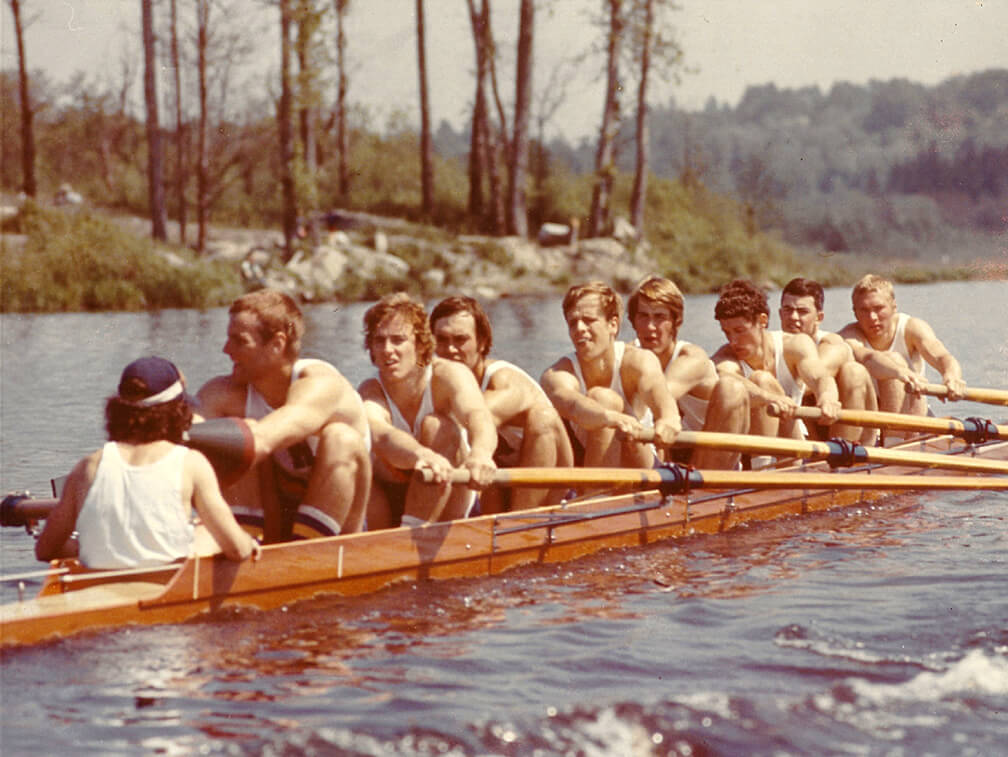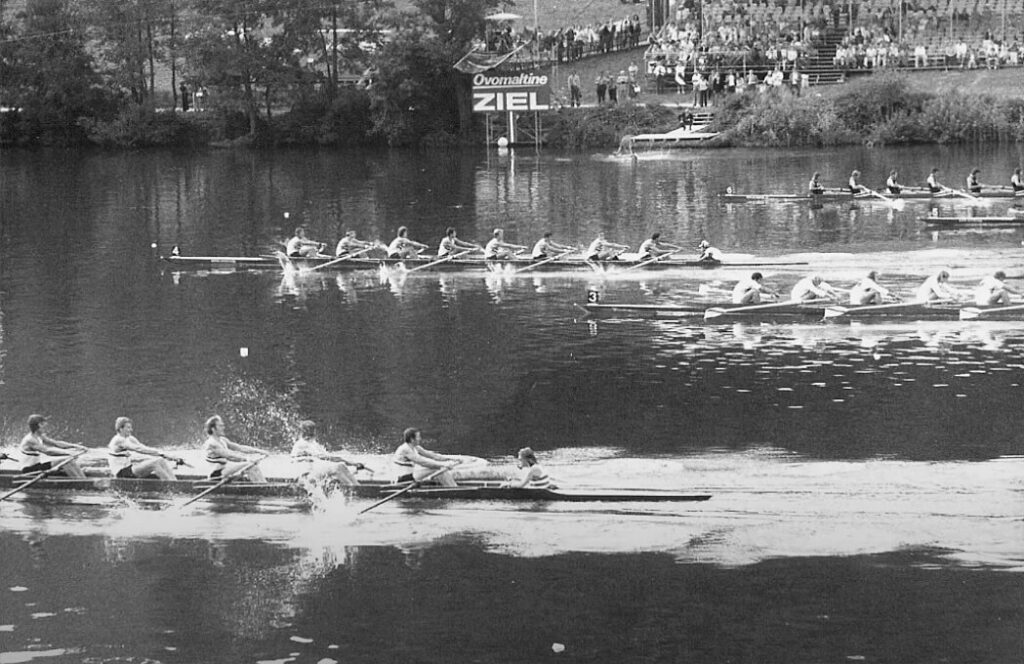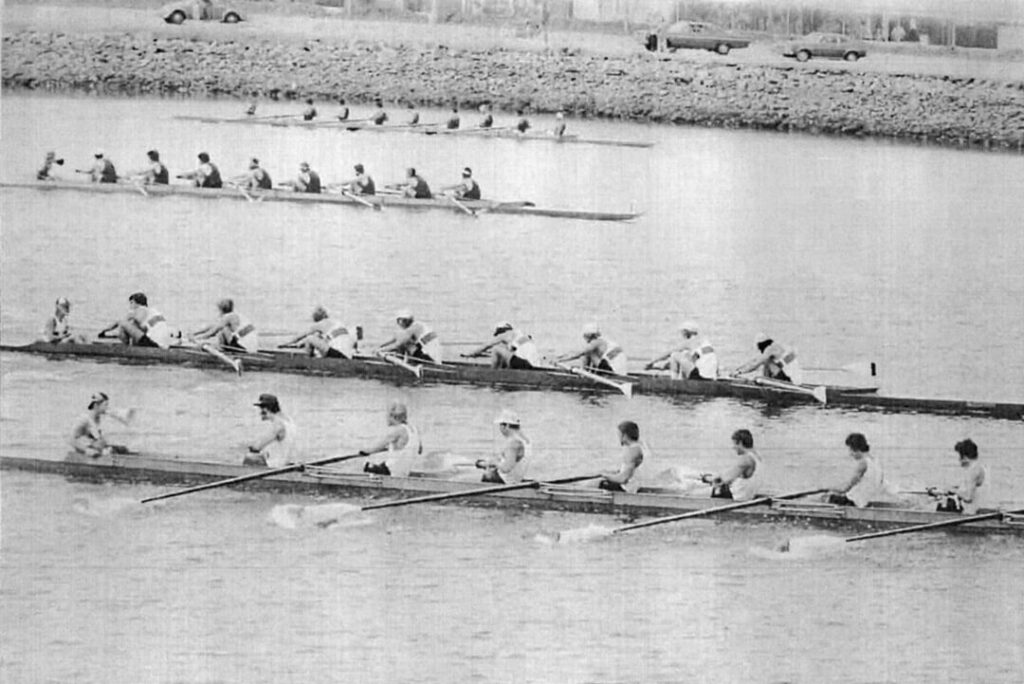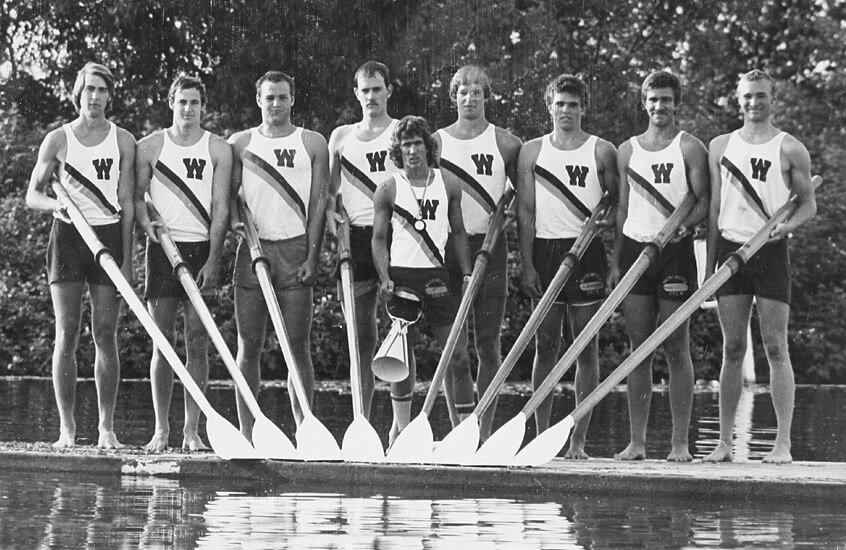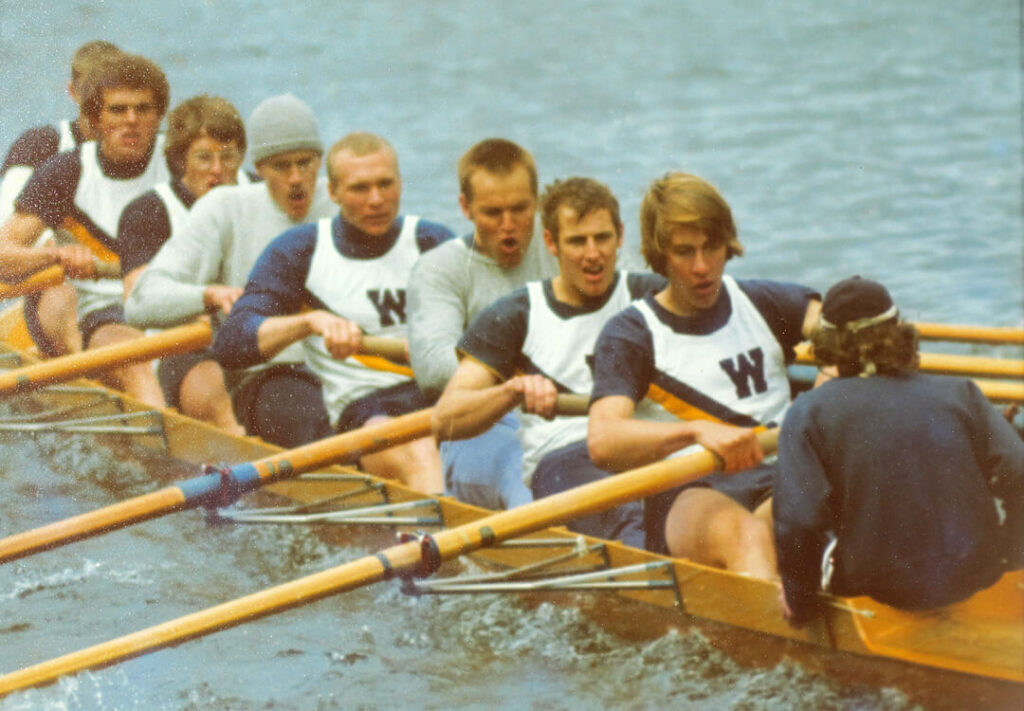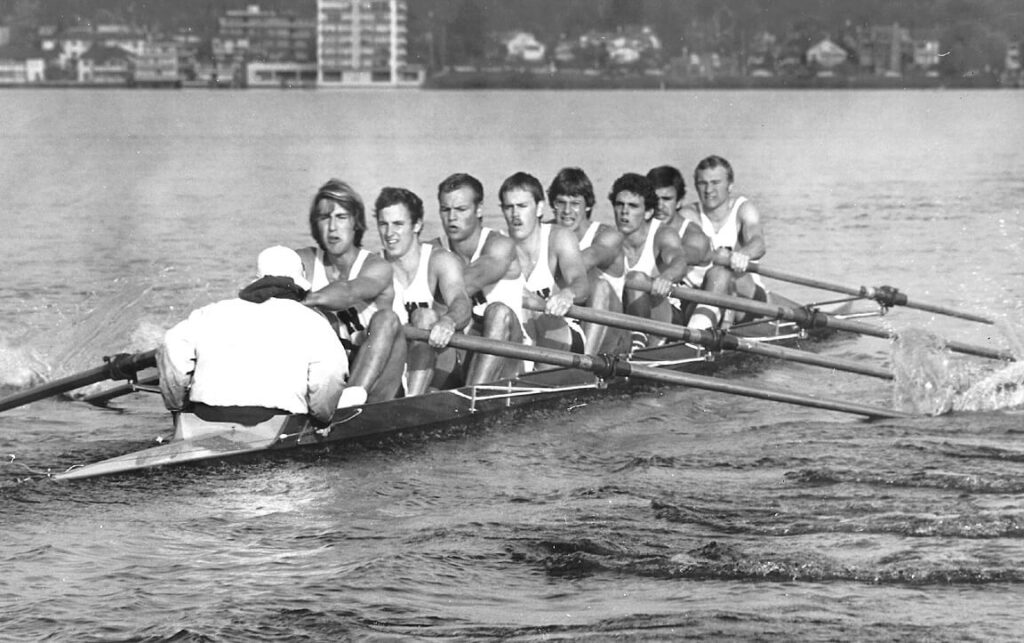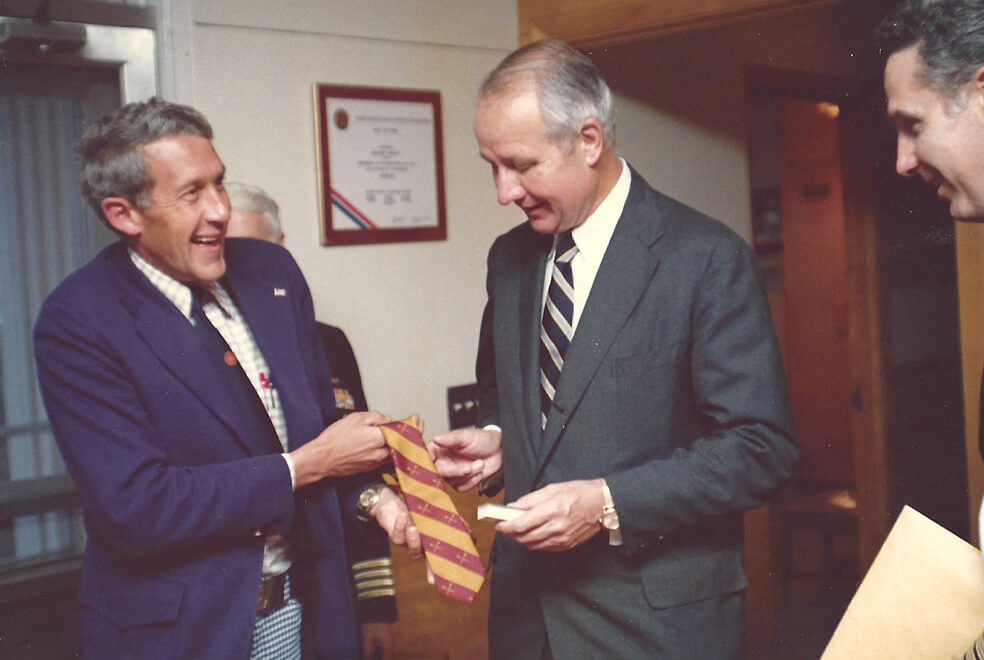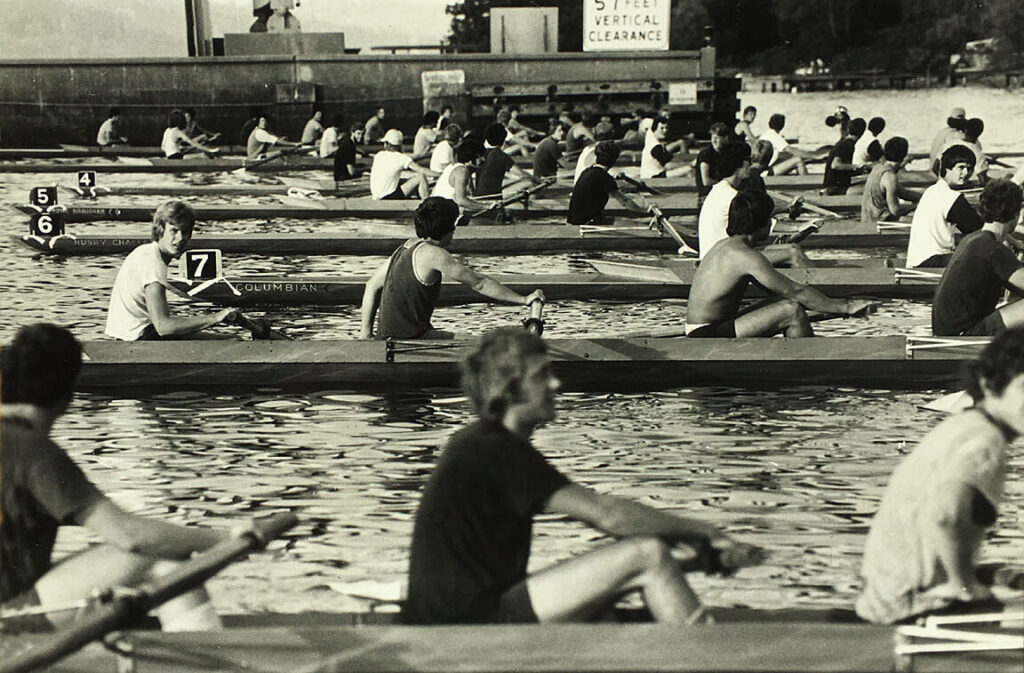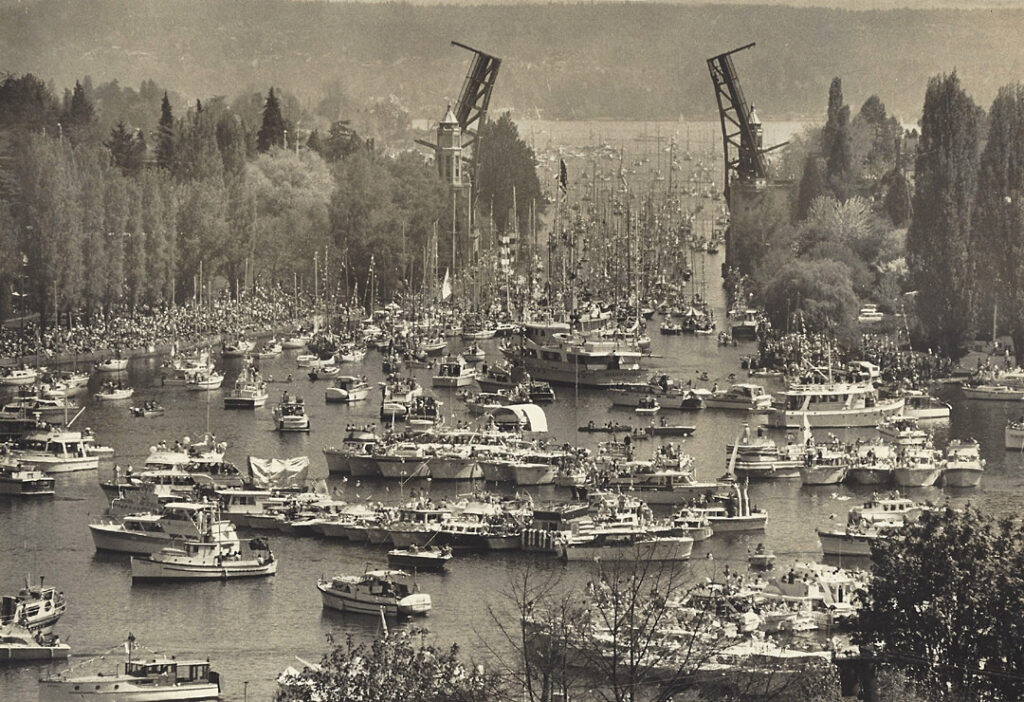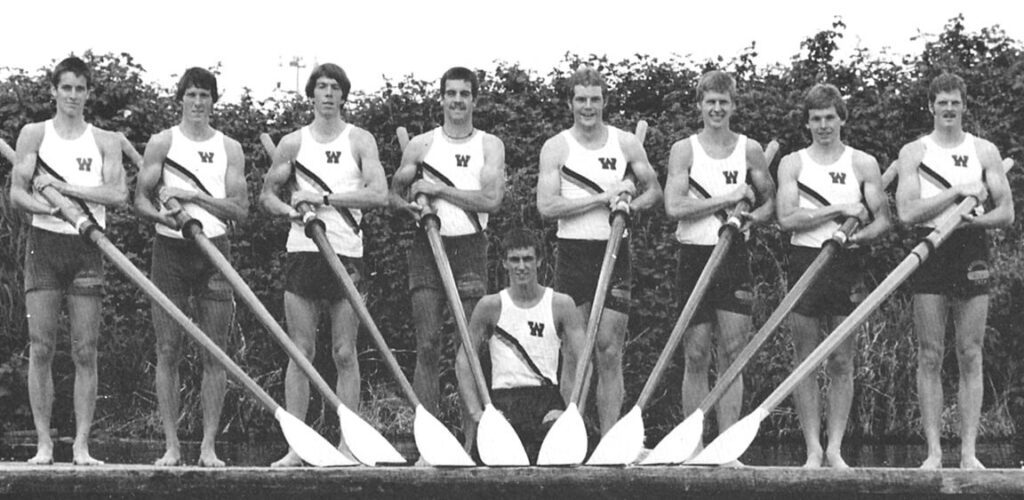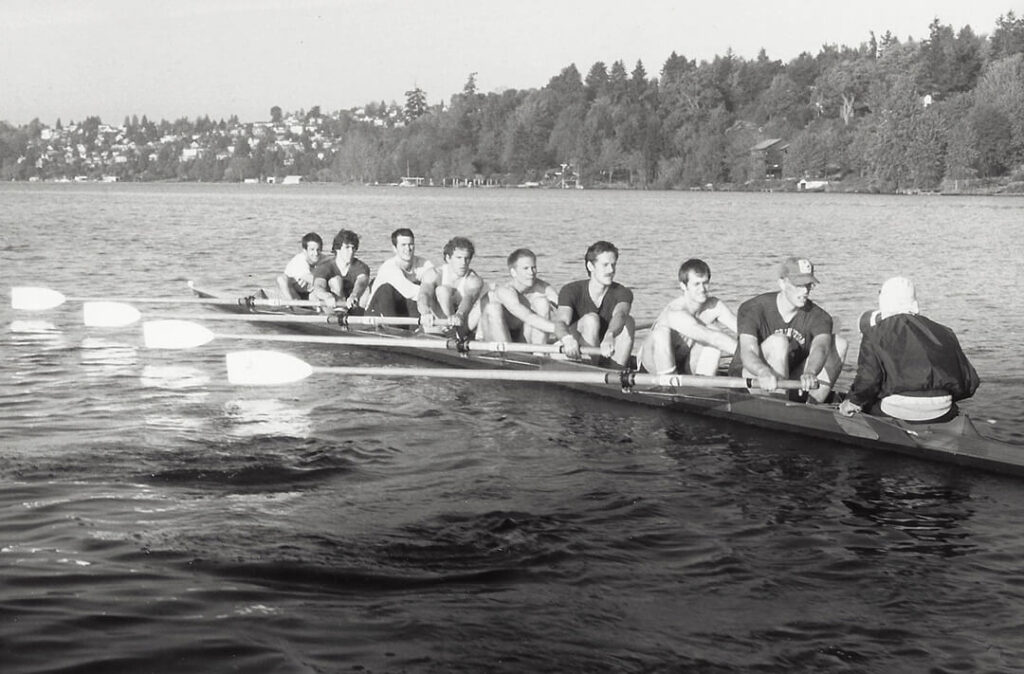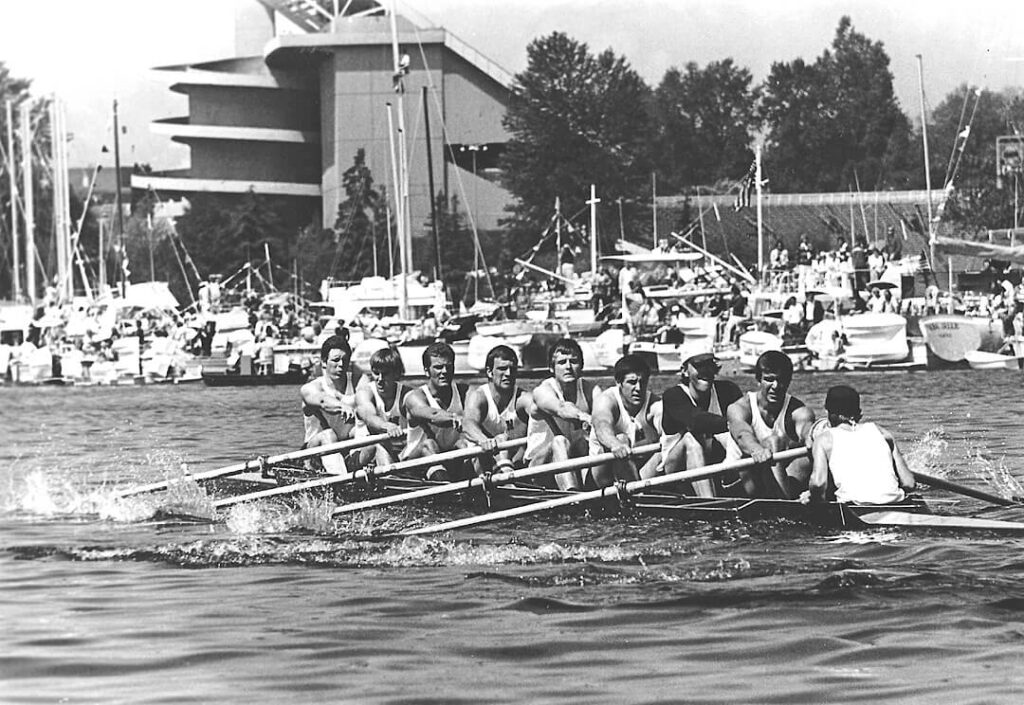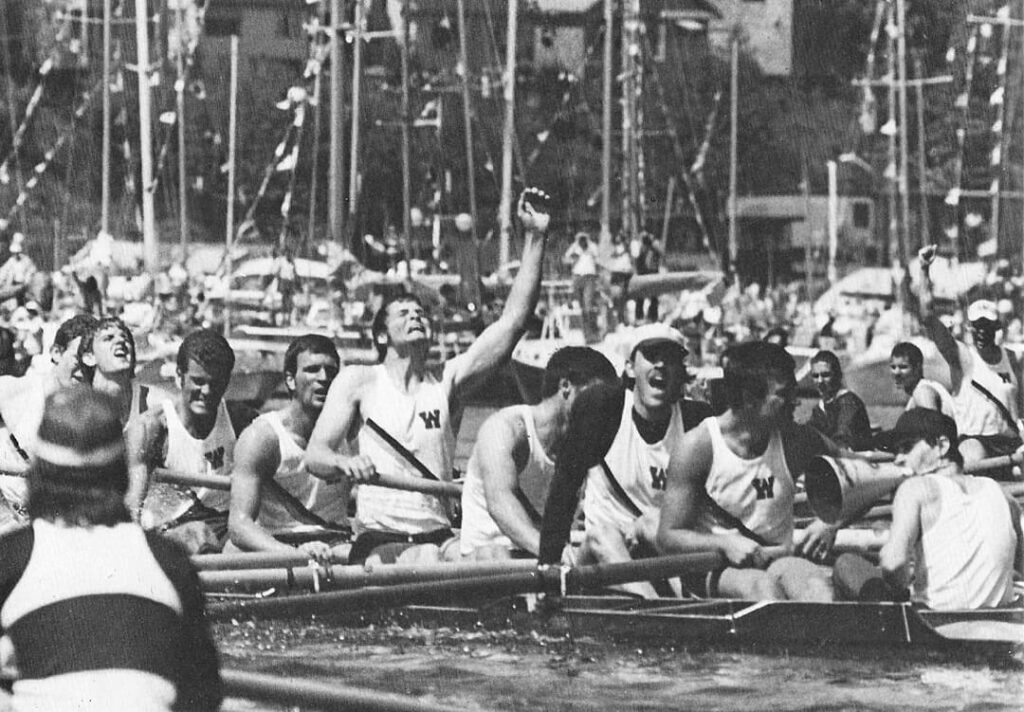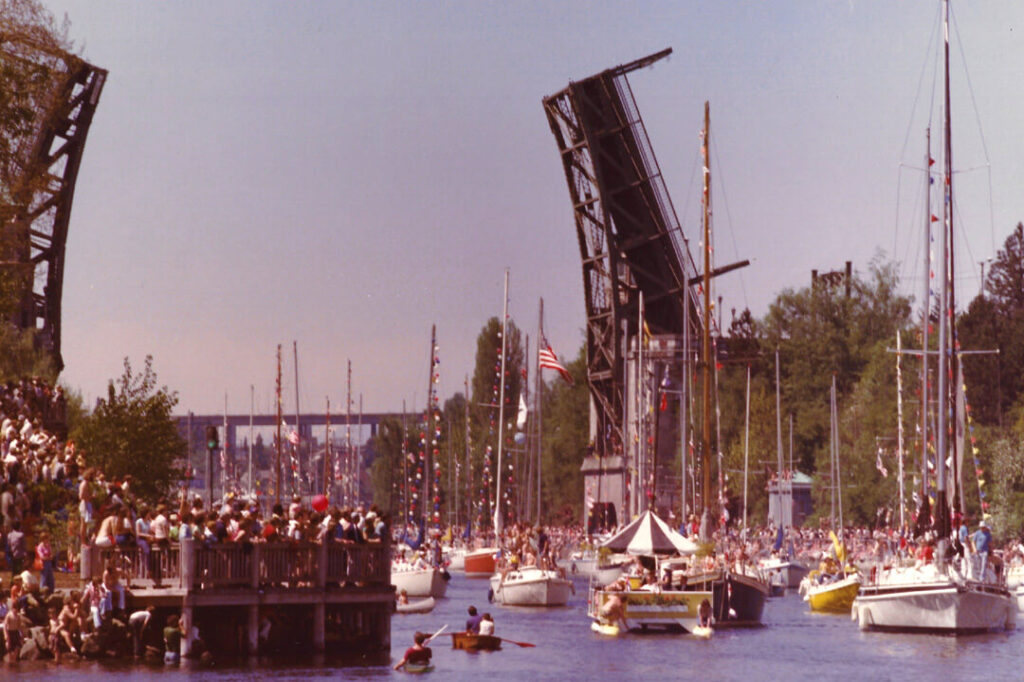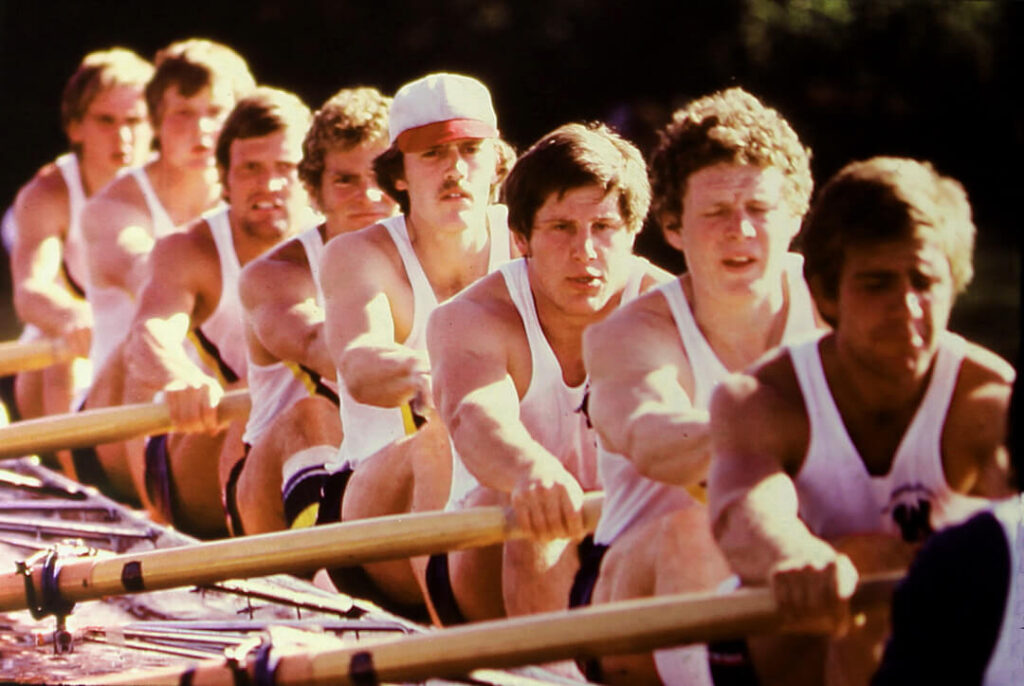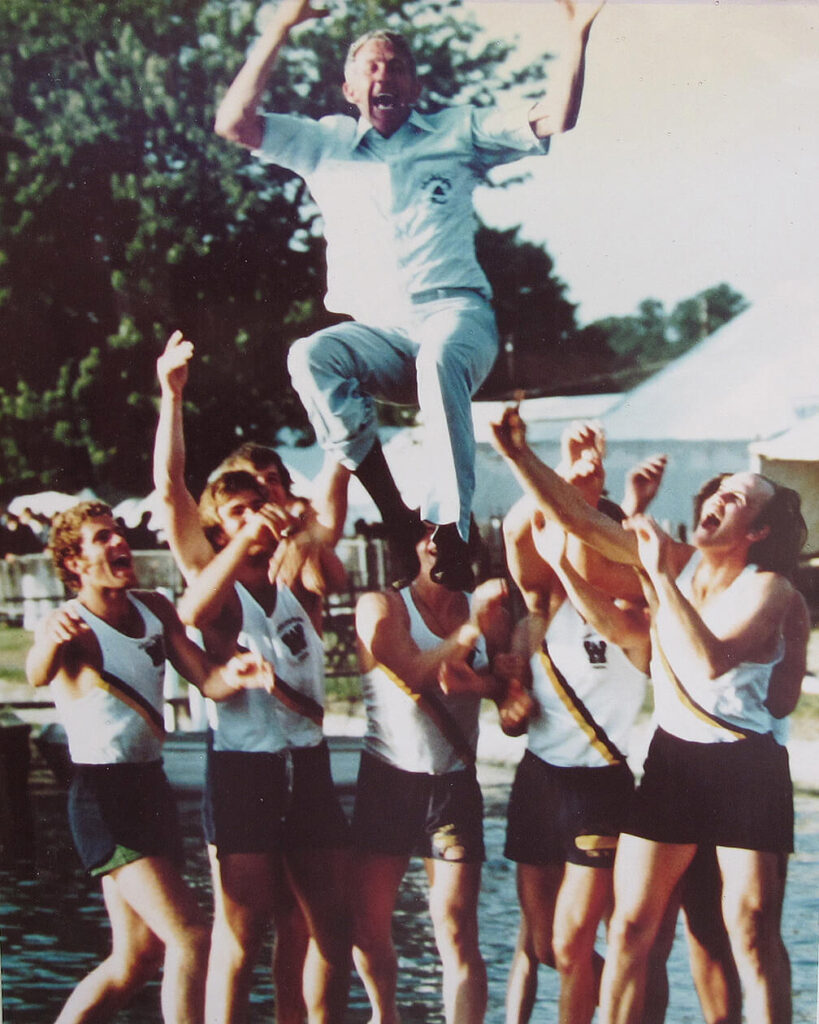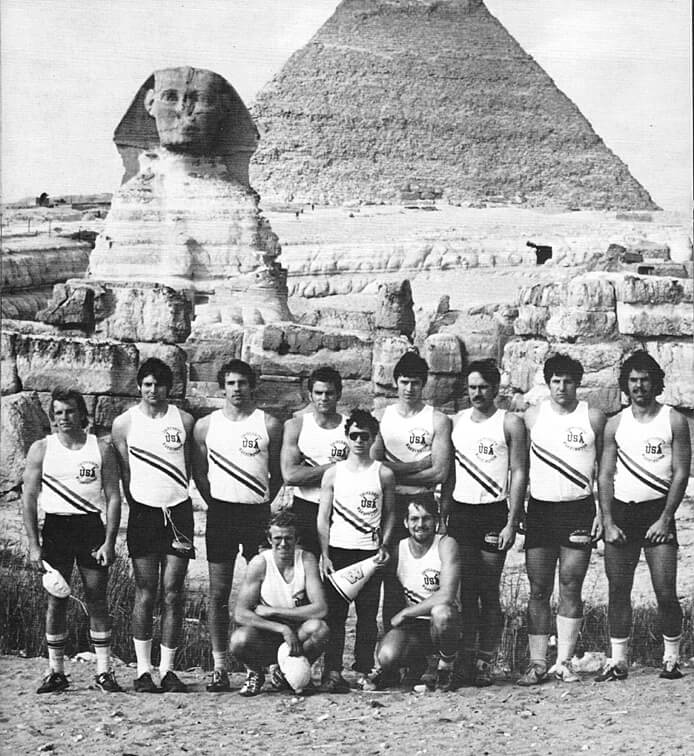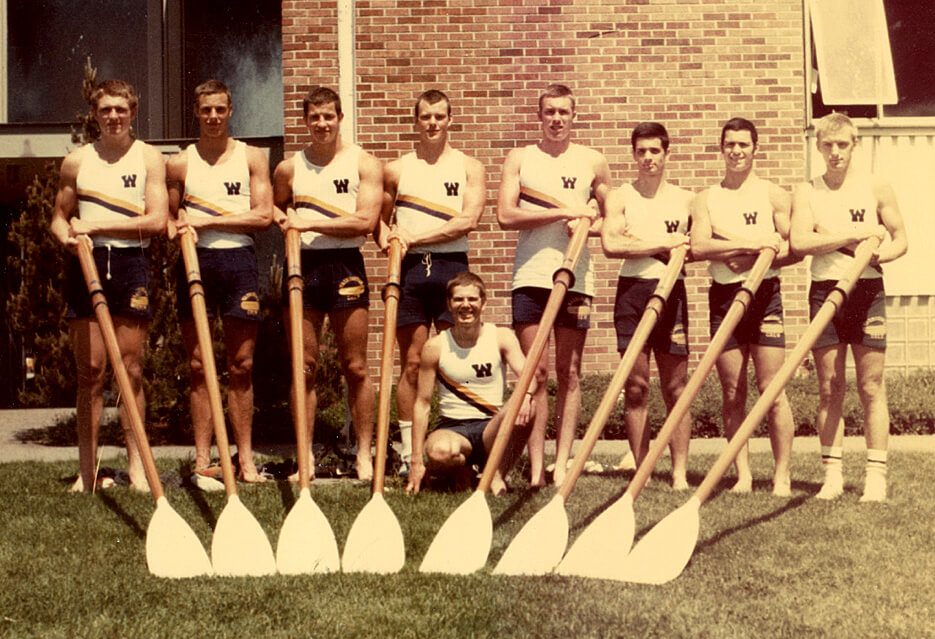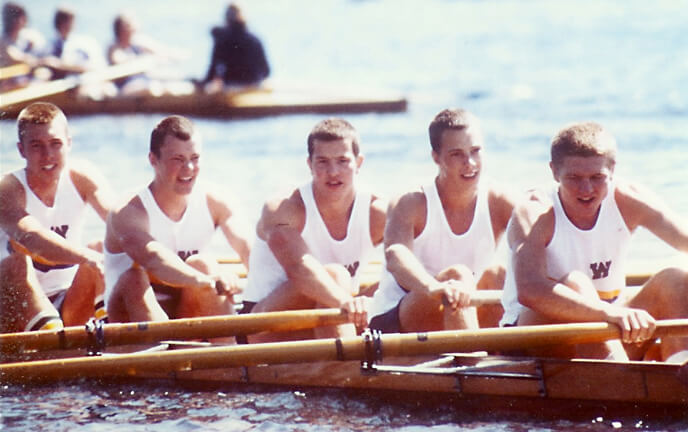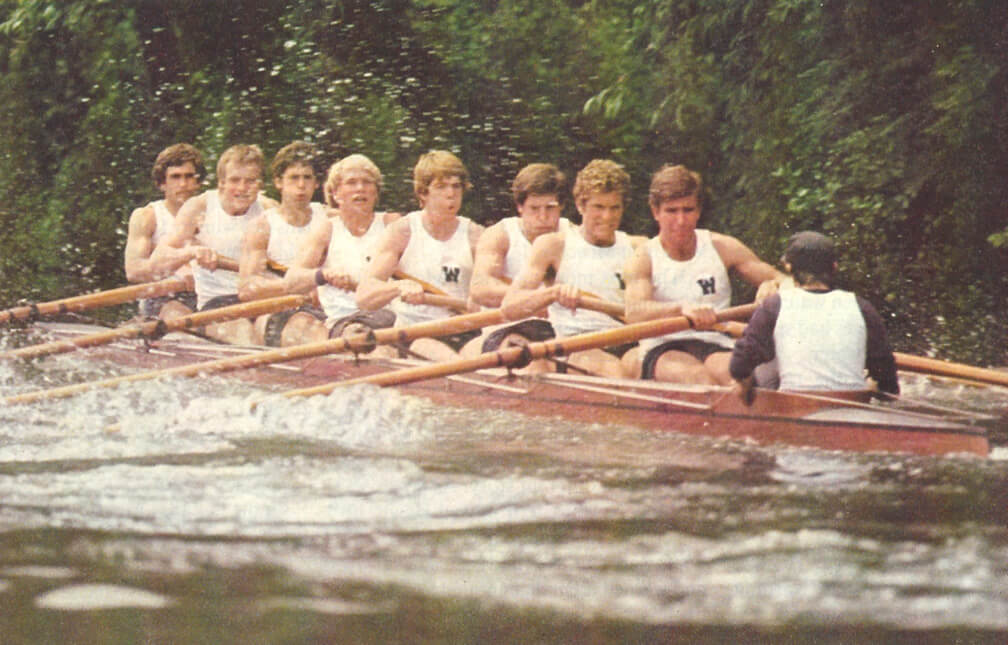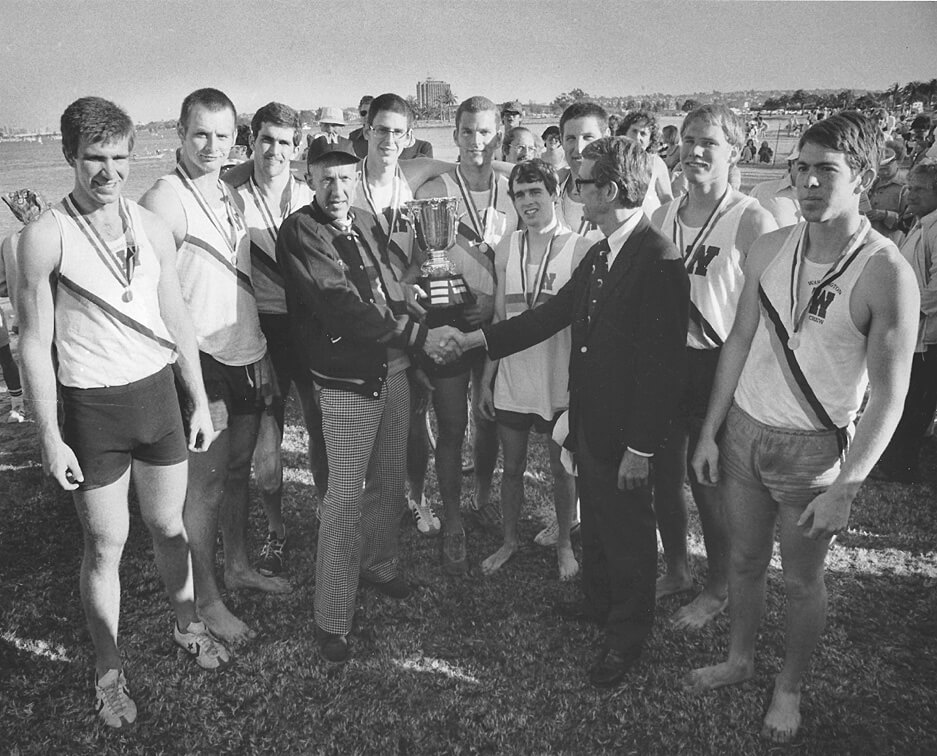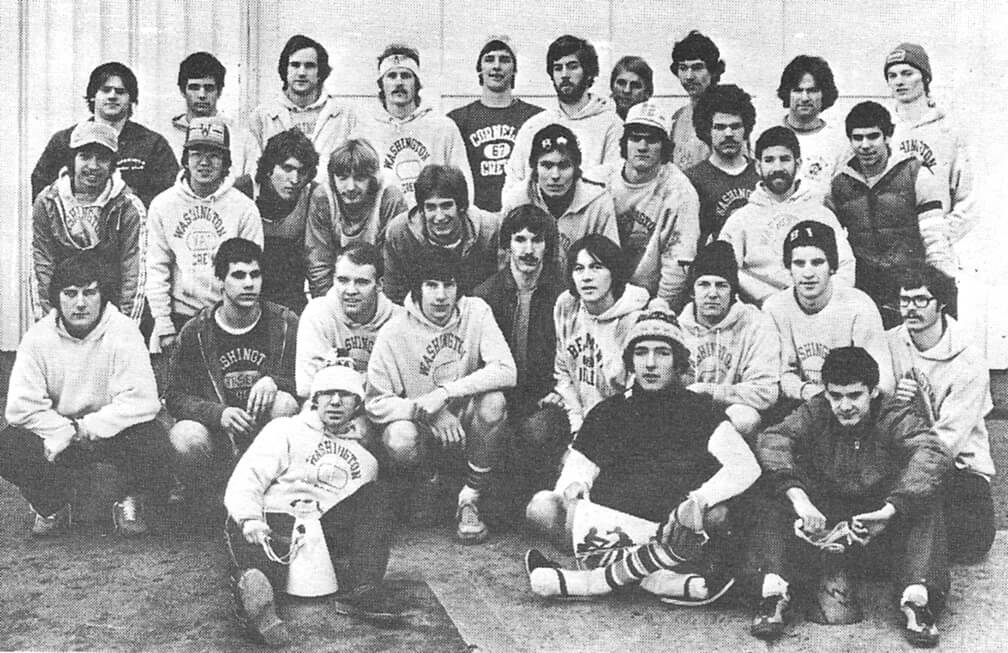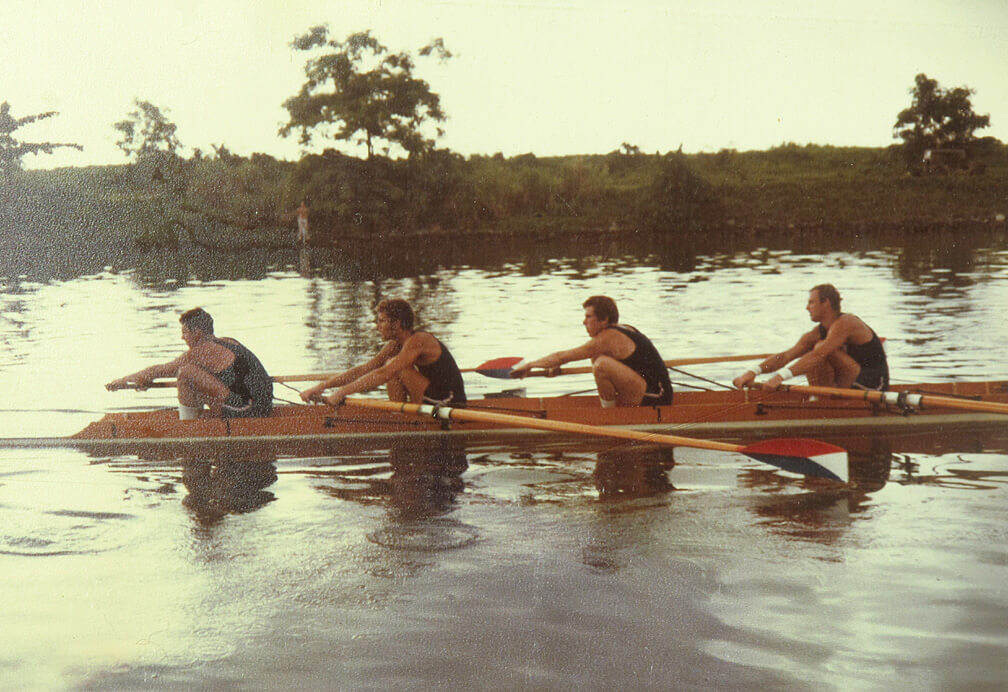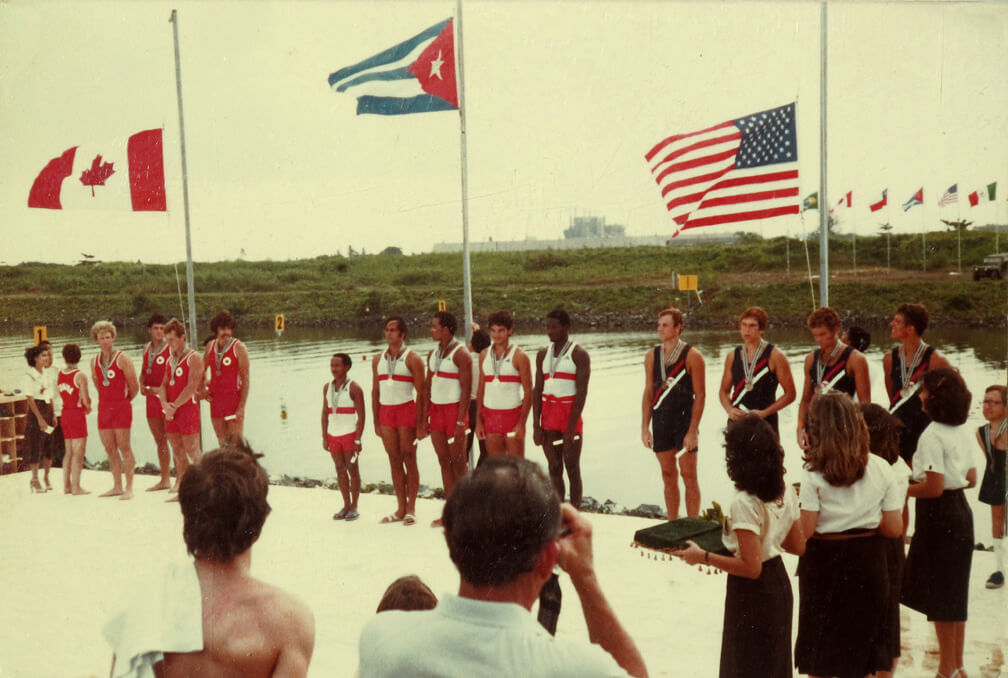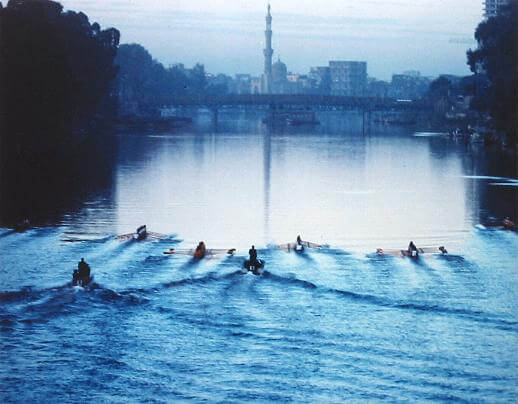Bolstered by the late success of the 1976 campaign and a solid group of returning oarsmen – including Olympians Mike Hess and Mark Umlauf who had missed the 1976 season – the crew left for San Diego confident. Harvard had chosen not to come to San Diego this year, but instead perennial east coast contenders Cornell, Pennsylvania, and Princeton made the trip.
On April 2nd, on a windy Mission Bay, the freshmen began the day losing a tight race to OCC. The JV’s followed with a half length loss to Pennsylvania, but a tough Lightweight team won by over three lengths to set up the varsity event. In a see-saw race down the entire 2000 meter course, Pennsylvania was ahead by a half length with 300 meters to go. Washington then poured it on, closing to dead even as the crews crossed in the identical time of 6:19.8, with a surprising Oregon State crew finishing third. After scouring the film for what seemed like an eternity, the race officials came back with their verdict: Penn by two inches. “It hurts,” croaked a dejected Dick Erickson.
Two weeks later the crew would face off against OSU on the Willamette. Erickson had his men out in small boats the week prior to the regatta, and then put together a re-configured line-up on the Thursday prior to the race. The result was a crew that had not rowed together, against a polished OSU crew that had defeated defending IRA Champion Cal at San Diego two weeks earlier. The race was close, but the Beavers moved in front with about 500m to go on the upriver course and held on to win by about two feet. “We didn’t get the desired results” said a now perplexed and slightly embarrassed Erickson, admitting the men, coming into the race, did not underrate OSU, “but maybe the coach did”.
So it was now seriously back to the drawing board for a coach that knew he had the talent to go somewhere but had yet to find the magic, a theme that would carry through this season. By the Cal Dual on Opening Day he had settled on a veteran squad that inexplicably jumped the start, causing the judges to stop the race, re-start, and warn Washington. The resultant second start saw Cal moving to an early lead, with Washington finally finding the rhythm to get back to even by 1000 meters. Cal sprinted early and moved ahead again in the early part of the Cut, but stroke Mike Hess took his crew into the sprint at the bridge and the crew powered forward, pulling ahead by almost a length in the final 350 meters to cap the sweep of the Bears by the team.
By virtue of that win in front of the huge Opening Day crowd, Erickson began the campaign to send this crew, and his dominant lightweight squad, to Henley. To seal the deal, both crews would have to win at the inaugural Pac-8 regatta to be held for the first time at Redwood Shores, in a single elimination, dual-race format on May 22nd.
On the day of the finals, it was the varsity lining up again against OSU, who earlier had defeated California in a semi-final to advance. Both teams started strong but the Huskies, under-stroking their counterpart by almost four strokes per minute, put it in gear after 500 meters and drove to a two length win. The lightweights dispatched their finals opponent, Cal, by eight lengths in a time only three seconds slower than the winning varsity time, prompting Erickson to say his lightweight crew was “one of the finest crews I’ve been associated with. They are an incredible bunch.” The freshmen also won, but the JV’s were nosed out by California in their final.
So Erickson would take one of his largest teams to Europe in 1977, but they were not given much of a chance. “Considering the Huskies (varsity) haven’t beaten Harvard in recent memory, the outlook for Washington may not be exactly glittering in surviving as the number one U.S. college crew either. Whatever, it seems ludicrous that it requires a trip to Europe to decide the U.S. collegiate championship,” said the Seattle P-I. As if to add to the uncertainty, Erickson was still tweaking the line-up of his varsity crew once in Europe.
But in a tune-up race at Nottingham the varsity served notice that the crew was ready, finishing second to the British National Team by a half-length and ahead of Harvard (Eastern Sprint champions). An excited Erickson said “we just flat-out out-rowed Harvard. It was a big day for Washington over here. What happened here will really help our confidence as we train for the Henley Regatta.” The lightweight team also performed well, finishing a close second to the British National lightweight team.
On to Henley, where the lightweights, entered in the Thames Cup (an open event not limited to lightweight crews), advanced after winning their first race. In their second race, they were defeated in a nasty headwind, losing to a much heavier crew that powered into the weather. That same day, Garda Siochana (basically the 1976 Irish Olympic Crew), defeated Harvard in the first round of the Grand.
Meanwhile, a group of Washington spares – two lightweights and two heavies – formed a team that began their unlikely quest for the Visitor’s Cup (straight fours) by winning their first round over a favored St. Catherines College. Trailing much of the race, the Huskies moved through the Cambridge school and in the final sprint pulled away to a two and a half length win. The St. Catherines stroke oar collapsed at the end of the race and fell into the water, where members of a launch retrieved him. “What’s so surprising about that win is that this was only the third time the four have sat in the boat together,” said Erickson.
In the Grand Challenge semi-finals, the Washington varsity, which had drawn a bye in the first round, now faced Garda Siochana. The Huskies had a start “that put the fear of God in them” according to Erickson, and veered off course toward the log boom, but settled down and began to row their race. Once back in the race by Fawley, the crews were never separated down the course by more than a few seats, Washington sprinting to win by a half-length. “They rowed for their life today” said Erickson. The headwind and rough conditions played into the Huskies strengths, but Erickson privately worried whether his crew had anything left for the final the next day. The British National Team (rowing as the Leander and Thames Tradesmen) in the other semi-final were also forced to row a tough race, defeating IRA Champion Cornell by only a quarter length.
After advancing through Downing College in the quarters and London Rowing Club in the semi’s, the four was now poised in the final on Sunday, July 3. The crew got a good start, were challenged for the first 500 meters, but then pulled away and never looked back, winning the Visitor’s Cup by multiple lengths of open water over Lady Margaret’s, for Washington’s first ever win at Henley. It was as unlikely a win for Washington as it was a harbinger of things to come.
The final of the Grand was postponed for three hours after the crews had launched, rowed to the start, but then were informed that a broken foot stretcher in the Leander crew needed repair. Back at the tents the men ate cookies. Finally lined up at the start hours later, the crews were forced to wait again, as a flock of geese were escorted off of the course, the uneasy tension broken by friendly conversation among the opposing crews – a scene not uncommon at Henley.
As the starter’s flag dropped, Washington exploded off line, settled, and began to move to a half-length lead by the Barrier. Leander took a move, but the Huskies answered and began to pull away in earnest, and by the time they were in front of the enclosures were up by a length and cruised home to win the Grand Challenge in 6:27. “We decided that if we got ahead we were not going to let them back. This is the one we’ve been working for all year,” said Hess.
On July 9, the crews rowed at Lucerne against more international competition, this time being defeated by the East and West Germans, the Russians, Bulgaria and other national teams, finishing ahead of the only other American crew entered, Cornell. “We found out how deep the water is,” said a humbled Erickson.
But he also knew that regardless of these results, nothing would tarnish the legacy of the 1977 team as the first – and second – Henley Champions at Washington. Yes, maybe it was “ludicrous” – as the P-I noted earlier – to choose a national champion in Europe, but that was the way it had to be. And there was no doubt, after this performance, that Washington had established itself as just that.
Seven Huskies made U.S. National Teams in the summer of 1977, including Scott Donaldson, Mitch Millar, Mark Miller, Ross Parker, Chris Wells, Mark Umlauf and Mike Hess.
